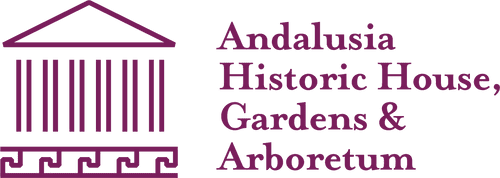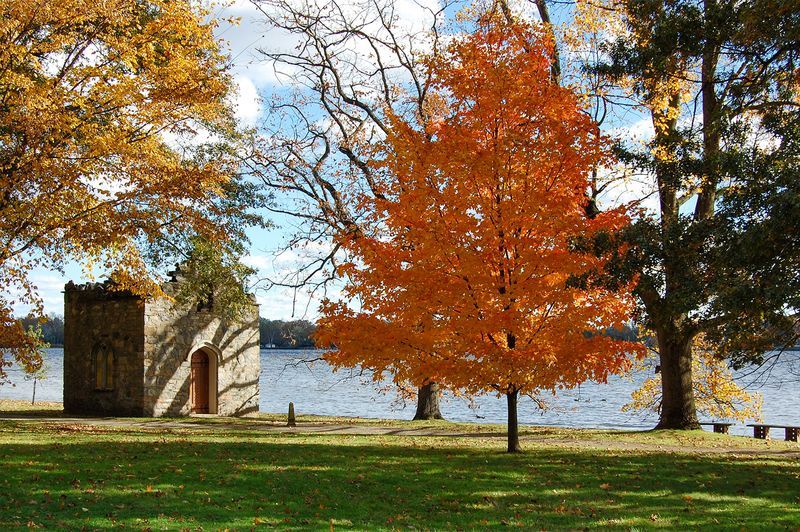
THE STORY OF THE GARDENS
Andalusia’s gardens date back more than 200 years. The first was created in the late 18th century by John Craig, the owner of a residence that, expanded and enlarged, became the Big House. Craig was an avid plantsman, as evidenced by his copy of the 1791 book, Every Man His Own Gardener; on its back page, he listed the many varieties of flowers he planted on the property.
Other Andalusia residents followed Craig, contributing to what has become a collective garden, evolving over two centuries. Some added small touches here and there, while others made extensive changes. The result is a kind of horticultural timeline, one that reflects the long continuum, over generations, of one storied family — and America itself.
The next major step in the garden’s evolution was overseen by Letitia Glenn Biddle, who moved to Andalusia in 1888 after marrying Charles Biddle. Noting in her journal that vegetables, rather than flowers, were mainly cultivated in Andalusia’s gardens, she set out to redress the balance, adding colorful blooms including tulips, hollyhocks, larkspur, gladiola, and a lovely “American Beauty” rose cultivar.


Letitia’s horticultural expertise didn’t just serve Andalusia, but the nation as well. In 1904, she hosted the very first meeting of the Garden Club of Philadelphia at Andalusia. Nine years later, she and several other women, working in the property’s free-standing Billiard Room, drafted the by-laws that established the Garden Club of America. Other significant changes to the gardens in the 20th century include work by her grandson James “Jimmy” Biddle (1929-2005), who planted the original Green Walk in the 1960s and White Garden in the 1990s.
The most recent transformation of Andalusia’s gardens took place in 2017-18, when noted British landscape designer Arabella Lennox-Boyd stepped in to update them. It was a natural pairing. Lady Lennox-Boyd’s familiarity with Britain’s stately homes made her ideally suited for creating an appropriate natural context for the Big House, while her flowering design style perfectly complemented Andalusia’s existing gardens.
It was an enormous task. Lady Lennox-Boyd added some 14,000 plants — assorted trees, shrubs, roses and perennials — sourced from as far away as Texas, Oregon and California.
A WALK IN THE GARDENS
To enter Andalusia’s gardens, turn into the Green Walk, located east of the Big House. The Ilex hedge, to the right of the path, both defines the walkway and imparts a kind of grandeur to it. Lady Lennox-Boyd is known for creating magnificent herbaceous borders, often color-themed. Glorious examples of these can be found all along the walk — a striking pattern of pink, purple, and white that revolves across the growing season.
Andalusia’s gardens are a succession of delightful surprises. The property’s former icehouse is just one striking example: Lady Lennox-Boyd envisioned it as a snow-capped mountain with abundant blue-star juniper across its roofline and an arbor swathed in white wisteria. From here it’s just a short, viburnum-scented stroll to The Father’s Conifer Walk (named for Jimmy Biddle), with its dwarf evergreens, several having developed into wonderful trees over the years.
Nearby, some small, long-blooming pink “fairy roses” by a garden gate serve as a teaser for the fragrant Rose Garden nearby, which features such varieties as Hybrid Tea, Old Garden, and English, among many others.
Further down the path, a tall, elegantly weathered brick and stone wall marks the Walled Garden, where Nicholas Biddle’s graperies long-ago once stood. (One of his clever wood-framed structures has been reconstructed on the site.) Providentially, the wall that bordered these hothouses was retained by earlier generations. Besides being a well-loved landmark in the garden, it plays a horticultural role: wisteria thrives on it, and it serves to protect the rose garden.
On the other side of the wall, the Peony Walk is, in summer, a riot of pink, white, and red. Given the legendary hardiness of these flowers, which can live for a century, some may well have been planted generations ago.
Back on the Green Walk, extraordinary plants, shrubs, and trees pop up, one after the next. The beautiful paperbark maple, with its bursting leaf canopy and distinctive rust-red peeling bark, is of Chinese origin. Nearby, there’s another intriguing specimen from Asia: a Japanese umbrella pine, with its whorling evergreen needles. A fascinating-looking shrub with bristly white blossoms — a bottle-brush buckeye – is, by contrast, native to Pennsylvania.
While this part of Andalusia is now a public garden, it still speaks, inescapably, of family life. The Pet Cemetery, on the other side of the Green Walk, commemorates some beloved Biddle family dogs. Walking down the Woodland Walk in early spring, when daffodils run the show, is its own reward. Seen through the forest, a trio of Doric columns sounds a classical note, reminding visitors that, however often — and delightfully — the gardens transform, so much of the surrounding landscape remains blessedly unchanged.
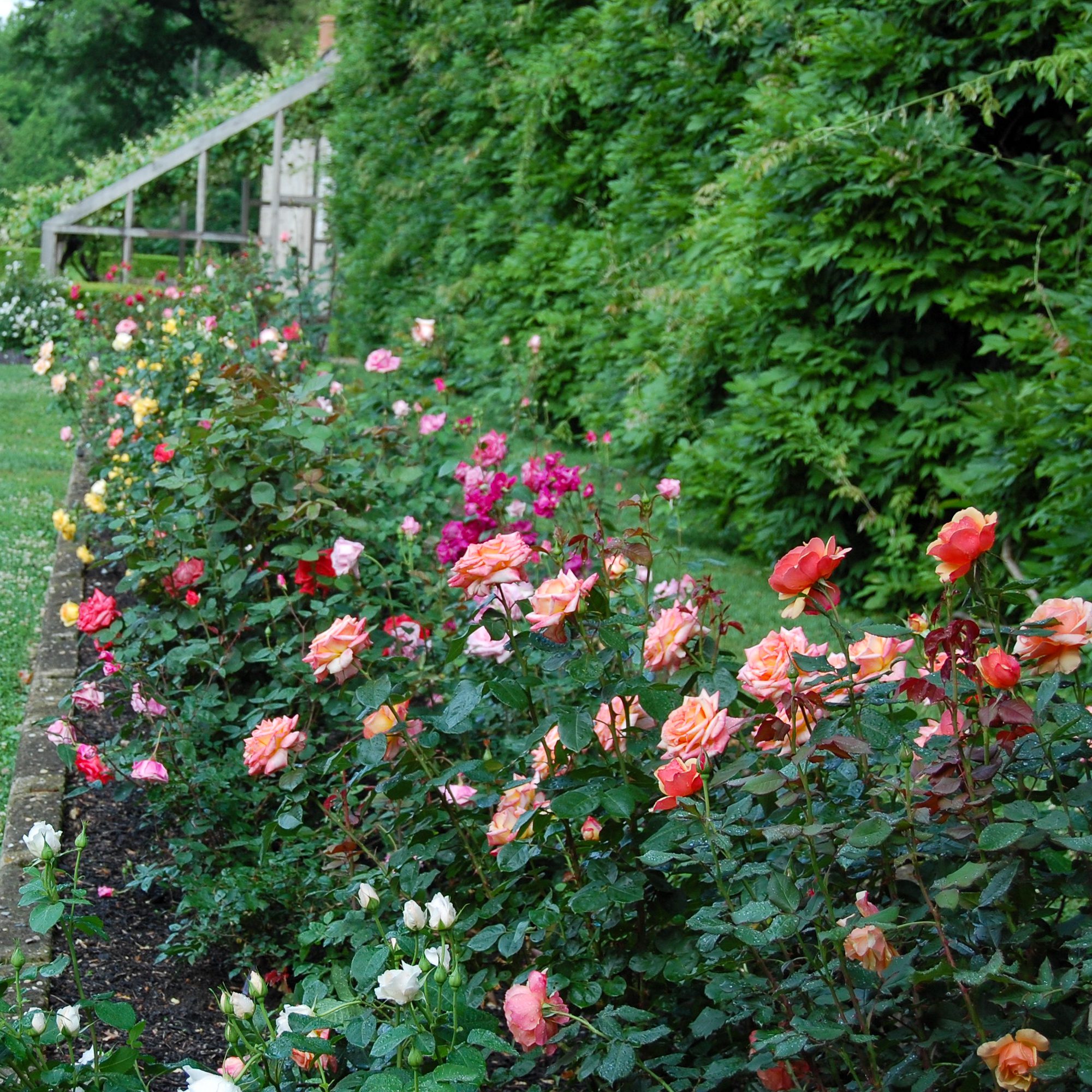
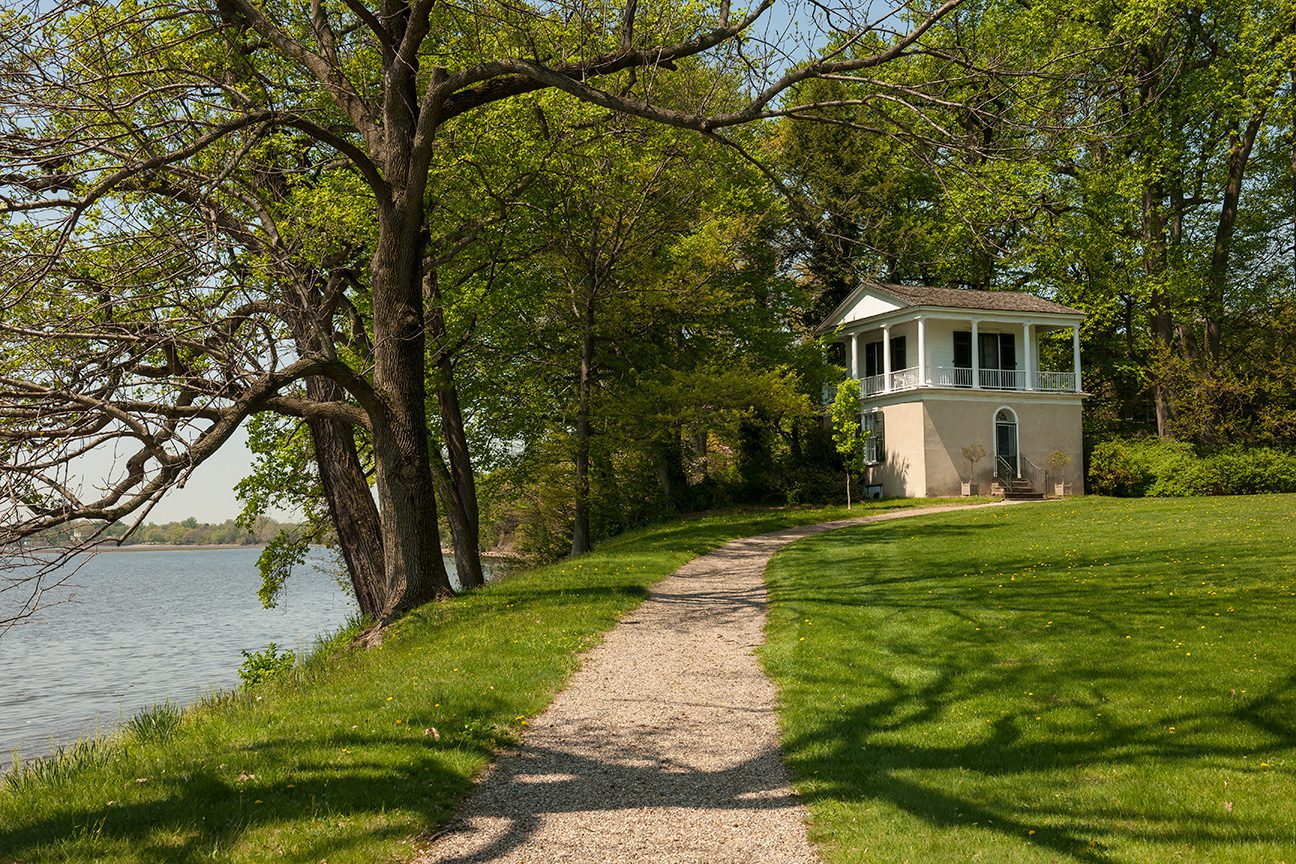

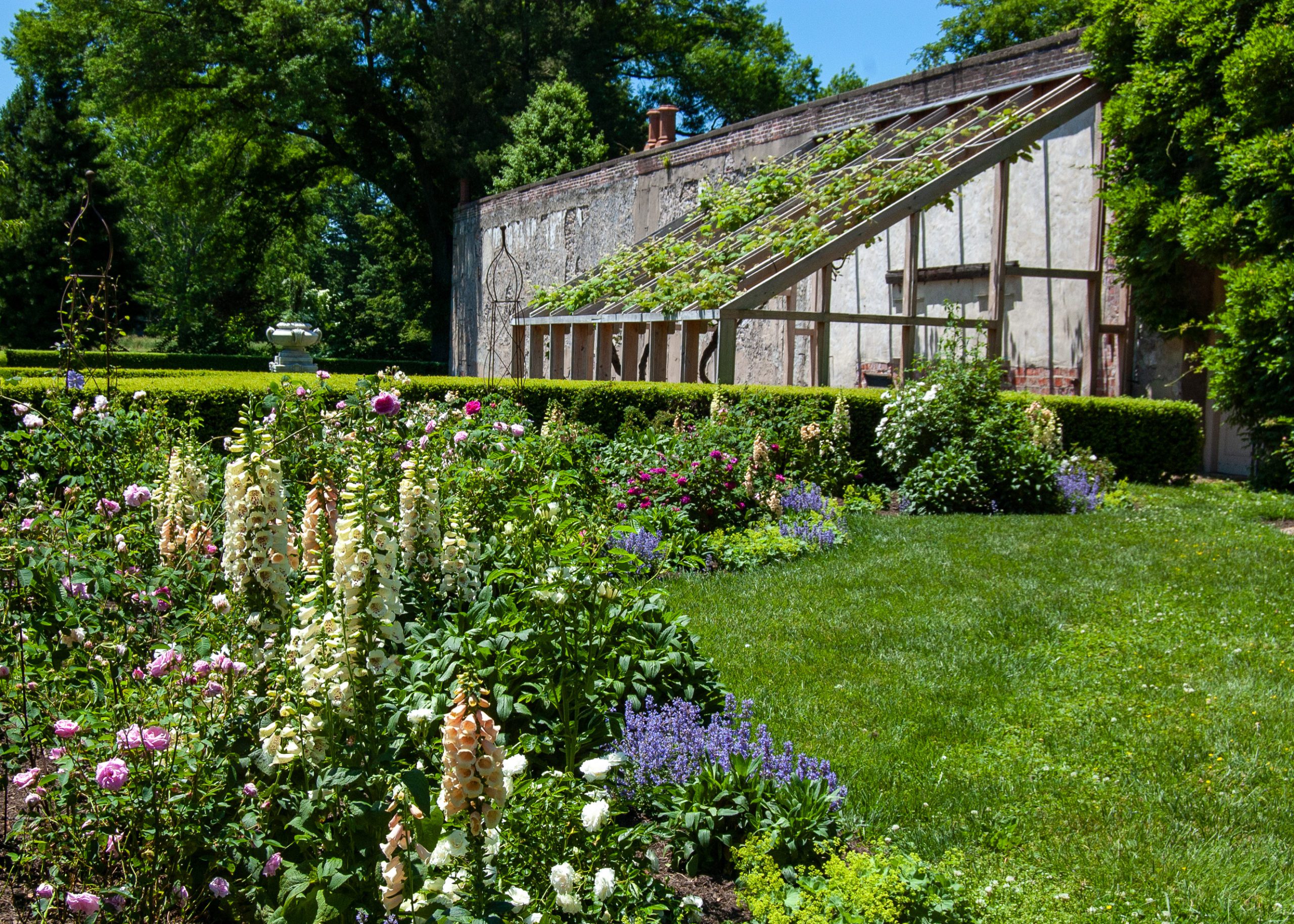
FUTURE GARDENS
Work on the gardens at Andalusia is never truly finished. For all their beauty and refinement, they are ever growing and changing. Lady Lennox-Boyd returned to Andalusia in September 2022 to review the progress of her elegantly reimagined Green Walk, Conifer Walk, White Garden and Rondel, planted in 2017-18, and to plot out new gardens and features for the Big Meadow. We cannot yet guess what is to come. All that is certain is that the history of the gardens at Andalusia will continue to be written — by one visionary gardener after another, working with lovely flora from all over the world.
GARDEN SYMPOSIUM
Garden enthusiasts will not want to miss Andalusia’s annual Garden Symposium. Featuring some of the most influential and innovative voices in the global gardening community, this special event also includes book signings, lunch, afternoon tea, and a private visit to the gardens at Andalusia.


VOLUNTEER GARDENERS
If you love gardening and spending time at Andalusia, then consider joining the Volunteer Gardeners program. This team of passionate individuals helps with a range of tasks around the 50-acre site, gaining a unique experience of the land and learning from professional gardeners and horticulturalists.
